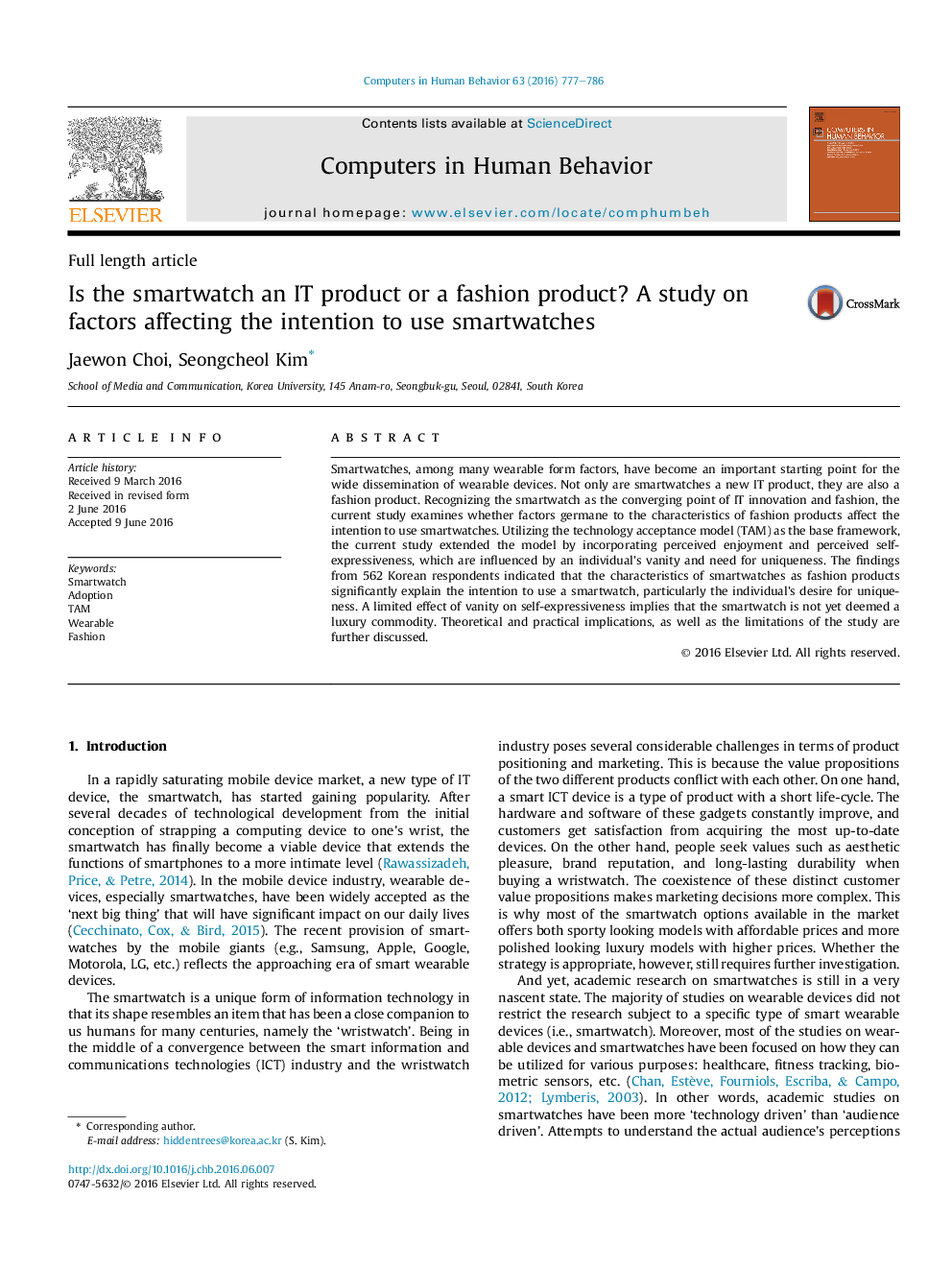| Article ID | Journal | Published Year | Pages | File Type |
|---|---|---|---|---|
| 6836860 | Computers in Human Behavior | 2016 | 10 Pages |
Abstract
Smartwatches, among many wearable form factors, have become an important starting point for the wide dissemination of wearable devices. Not only are smartwatches a new IT product, they are also a fashion product. Recognizing the smartwatch as the converging point of IT innovation and fashion, the current study examines whether factors germane to the characteristics of fashion products affect the intention to use smartwatches. Utilizing the technology acceptance model (TAM) as the base framework, the current study extended the model by incorporating perceived enjoyment and perceived self-expressiveness, which are influenced by an individual's vanity and need for uniqueness. The findings from 562 Korean respondents indicated that the characteristics of smartwatches as fashion products significantly explain the intention to use a smartwatch, particularly the individual's desire for uniqueness. A limited effect of vanity on self-expressiveness implies that the smartwatch is not yet deemed a luxury commodity. Theoretical and practical implications, as well as the limitations of the study are further discussed.
Keywords
Related Topics
Physical Sciences and Engineering
Computer Science
Computer Science Applications
Authors
Jaewon Choi, Seongcheol Kim,
